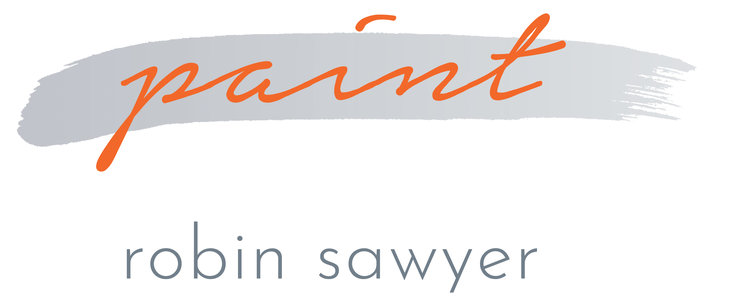BIOGRAPHY
ROBIN SAWYER has explored many paths during her life as a working artist. Music was her first serious creative endeavor, and in Southern California she taught and played piano professionally. Then, an inspiring visit to Guatemala redirected her focus. Immersed in that vibrant culture, she began photographing the locals and their brightly colored textiles. Upon returning from her stay, she entered a professional photography program at San Francisco’s Academy of Art, with the intention of making a career of it. Sawyer anticipated becoming a photojournalist, but the reality of family life made the hours and travel in potentially dangerous situations seem increasingly unrealistic. So she turned to architectural photography, which she practiced successfully in the Bay Area. Through that medium, she was drawn to form, contrast and line. These concepts eventually found their way into her fine art photography, which was exhibited in numerous galleries and featured in a solo museum show at the Coyote Point Museum in San Mateo. But despite her successes, Sawyer grew disenchanted. Feeling that the camera had become a barrier rather than an aid to her work, she enrolled in drawing and painting classes at a local college. There she found the satisfaction and hands-on interaction she had craved.
By the 1990s Sawyer had relocated to the Monterey Bay area and was phasing out her photography business and forging ahead with painting. She applied to the MFA program at San Jose State and was one of only eight painters accepted. She continued to study, exploring printmaking, drawing, and painting, but ultimately focused on the medium of oils. An enthusiastic engagement with the richness, depth of color, and malleability of oil paint became a dominant characteristic of all her work, and clearly evident regardless of her subject or approach.
Abstraction has directed much of Sawyer’s recent work, although her early paintings focused on the figurative. These were very well received, and she continued to work in that vein for a number of years. An award-winning series from the late 1990s called Earthbound centers on farm workers, a subject intrinsic to the Monterey Bay and Salinas Valley areas. Seeing these men and women working every day to supply her food, Sawyer felt moved to honor them in her painting. Despite a purposeful anonymity, each individual is distinctive and deeply evocative, stooping or crouching over their tasks, singly or in twos or threes. The paintings seem to offer a glimpse through a window in time, a vision of workers captured in snapshot-like vignettes. Using deliberate blends and juxtapositions of color, Sawyer suggests texture, invokes patches of light and shadow, and implies gesture; then with smears and drips of paint she enhances the emotive power of the scene. These works owe a nod to the Bay Area Figurative School, whose chief proponents Richard Diebenkorn, Elmer Bischoff, and David Park drew out of Abstract Expressionism a new milieu for the figure. Sawyer freely acknowledges them, particularly Diebenkorn, as inspiring influences.
An impulse towards abstraction is clearly visible in this early work, and Sawyer embraces it fully in her Jazz series. Here she reconnects with her musical roots, translating complex rhythms into paint. Created at the end of the millennium’s first decade, much of the series centers on freeform, gestural brushwork, with swirling strokes spiraling across the canvas in dynamic orchestrations of vibrant color. Among these, she includes a few structured color-field compositions, which employ an earthier, more subdued palette.
Building on the energy of Jazz, but returning to the animate world, Sawyer’s next two series draw inspiration from scenes of nature. The subdued beauty of clumps of drying winter grasses at the edge of a pond, the fluctuating light on water and the reflective patterns shaped by surrounding clouds and vegetation became subjects for the Reflections series, which engaged her throughout 2012. Here, the vigorous brushwork of Jazz is corralled in service to nature, while undercurrents of energy continue to resonate. The Emancipated Gardens series follows, and although these are also derived from nature, Sawyer’s pull towards abstraction feels inevitable. Despite lively botanical notes, her emphasis remains primarily on color relationships, surface texture, and expressive brushwork.
In a recent series, Sawyer reveals a renewed interest in the figure. She takes a sculptural approach, situating a spare, singular form within dense, non-objective passages of blended color. These are not individualized portraits, but lone figures who signify presence through their posture and position, and act as anchor point and focus to the composition. Sawyer also interjects an unexpected element: brightly patterned garments, made vivid with contrasting splashes of color. This deliberate activation of ornamentation reflects her interest in human adornment, and in our universal impulse towards creative self-decoration. Such attributes captivated her in Guatemala and again in Kenya, where she encountered the Maasai people in their brilliantly embellished attire. Her strong, cohesive brushwork gives these new works gravitas and a sense of dynamic monumentality.
Robin Sawyer expresses her engagement with painting through the polarities of representation and abstraction. Her questing spirit fosters self-reflection, and shifts of emphasis have enabled her to frequently reexamine and reimagine the kind of work she wants to make. A longtime spiritual practice, centered in the Buddhist principles of awareness, compassion, and impermanence is a valued ally, and supports her openness to risk taking and intuitive process. As ever, Sawyer forges ahead into new territory, drawing in what she’s gained from past experience. In seeking a more soulful and unified approach, she has successfully cultivated a rich, personal body of work.

